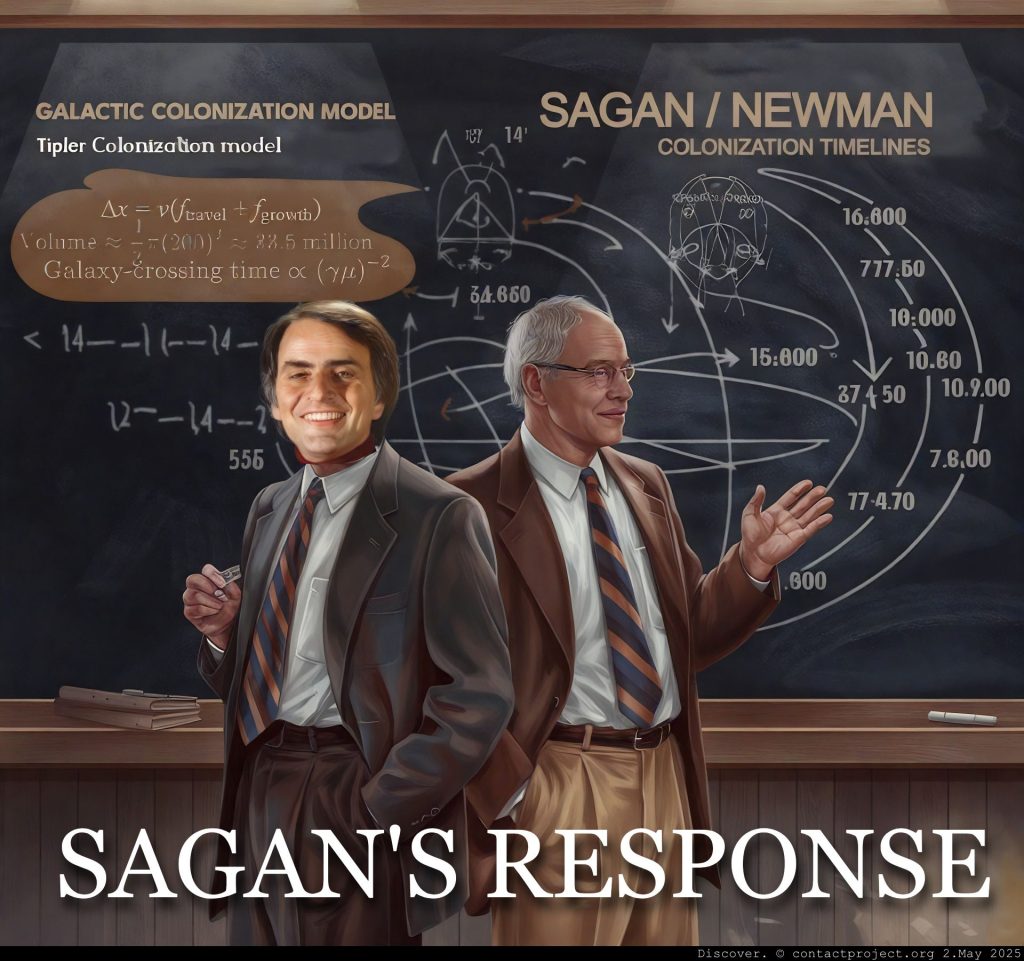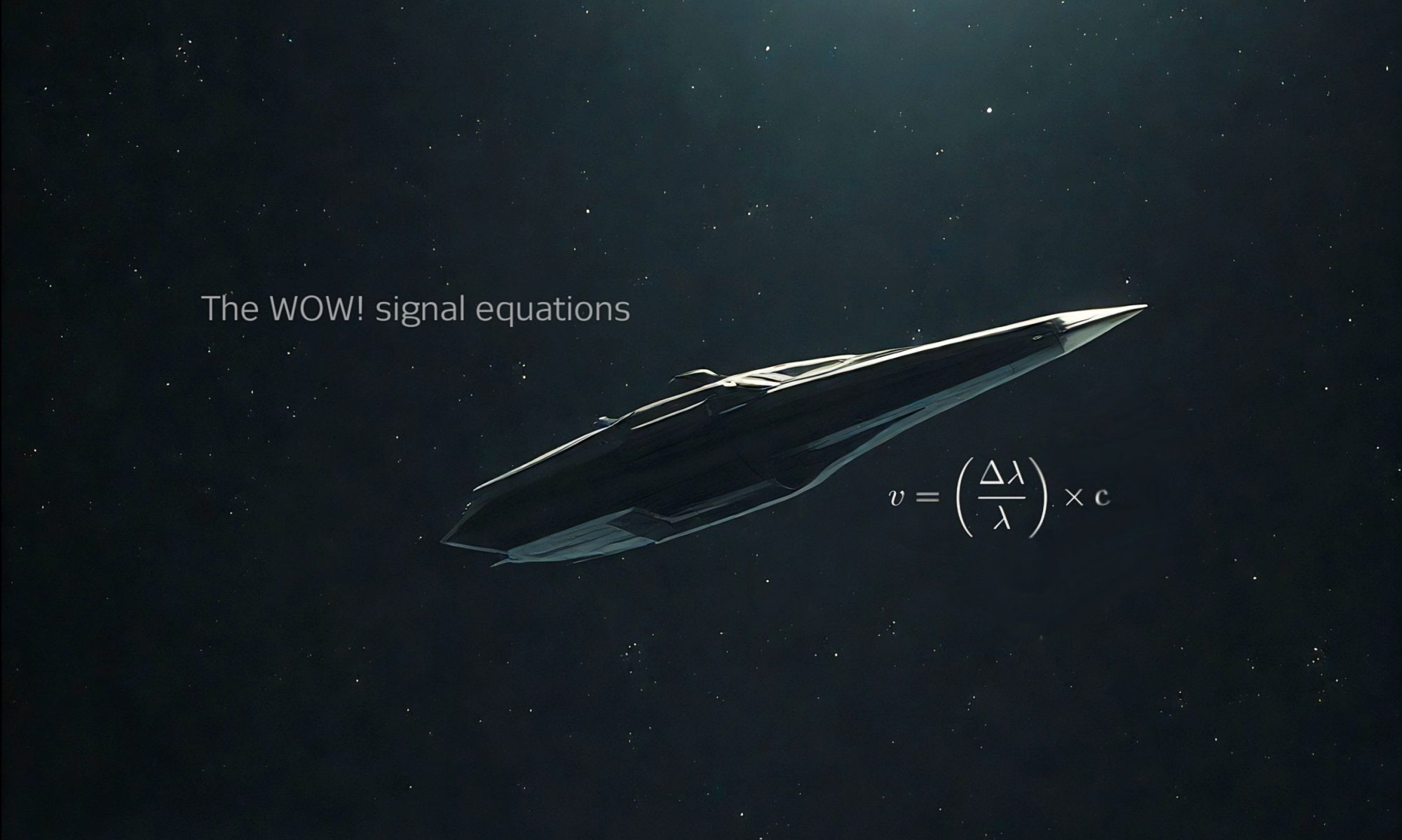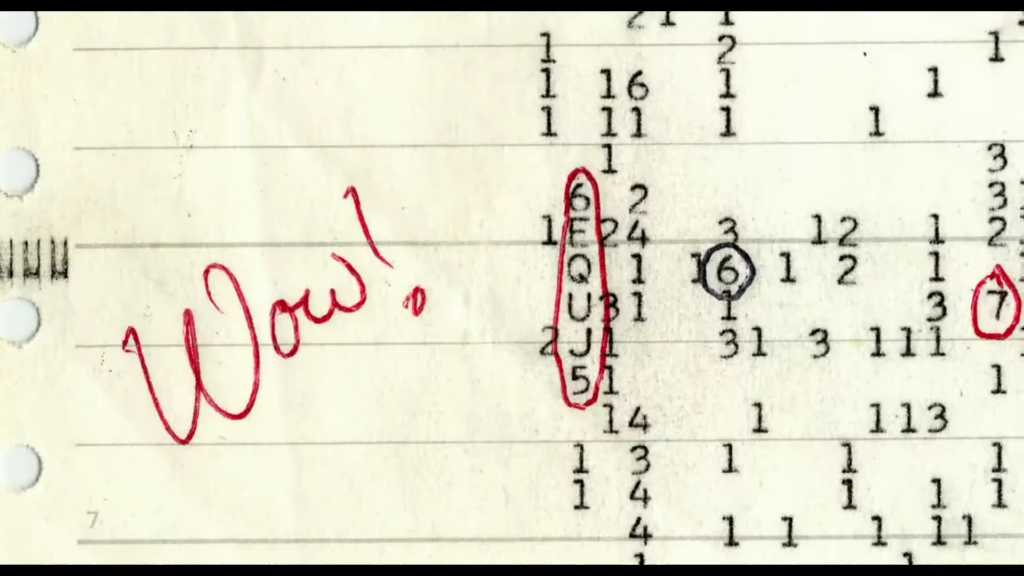SELF-REPLICATING PROBES
In the context of the Extraterrestrial Intelligence Search, in 1980 the mathematical physicist and cosmologist Frank J. Tipler published a paper, “Extraterrestrial intelligent beings do not exist.”
Tipler sought a universal principle to explain the Fermi Paradox: the apparent absence of extraterrestrial beings on Earth. He contended that if extraterrestrial intelligent beings existed, then their manifestations would be obvious. Conversely, since there is no evidence of their presence, they do not exist.

Frank Tipler argued that if any extraterrestrial civilization ever built self-replicating von Neumann starprobes, those probes would grow exponentially. They would fill the galaxy in a few million years. Since we don’t see them here, Tipler concluded there are no other intelligent civilizations.
• Tipler assumed each probe would land on a new world and make just one or a few copies before moving on. However, he had no reason to limit its reproduction so drastically.
• Even if each probe were only 10 grams and doubled once per decade, in about 150 generations we’d have the mass of an entire galaxy. This conversion to machines would be on the order of 1 followed by 54 zeros grams (1 quindecillion tons). Moreover, this transformation would occur in less than 15 million years.
• Because we see no evidence of such galaxy-eating machines anywhere, Tipler said no one else ever invented them. Therefore, no one else is out there.
SAGAN’S RESPONSE
Carl Sagan pondered the arithmetic of Tipler’s solipsist argument. His response is a classic in the realm of science and philosophy. He draws attention to the limitations of our current knowledge and the vastness of the universe. By stating, “Absence of evidence is not evidence of absence,” Sagan cautioned against jumping to conclusions based on what we don’t know.

Sagan and William I. Newman challenged Tipler’s assumptions and conclusions, proposing a more realistic colonization model based on population growth and organization. This alternative model estimates a galaxy-crossing time of approximately one billion years, significantly longer than Tipler’s few million years.
Sagan further suggests that self-replicating probes are subject to evolutionary divergence, imposing unacceptable risks to altruistic extraterrestrial intelligent life (ETI). The ETI only communicate with other ETI through signals. This argument assumes that self-replicating machines are essentially uncontrollable because they must evolve.
Sagan and Newman also propose that the emergence of powerful weapons of mass destruction may impose a universal brake on unchecked expansion. This could potentially limit the spread of advanced civilizations. Ultimately, they emphasize the importance of experimentation in resolving the Fermi Paradox. Systematic searches using radio telescopes and other tools are necessary to settle the question of whether we are alone in the universe.
Terrestrial Shortsightedness
Imagine New York in 1894, its streets choked with the clatter of hooves. Its futurists were drowned in calculations of manure. They predicted that by 1944 New York would drown in horse manure.
The futurists only saw linearity: more carriages, more waste, an apocalypse of filth. However, they could not fathom the silent revolution already stirring—the internal combustion engine, the horseless carriage—a paradigm shift that would render their equations relics.
So too might we falter when envisioning the starfarers of tomorrow. To assume interstellar travel or contact must devour suns is to chain possibility to the physics of this moment. What of the technologies unimagined? The spacetime shortcuts, the dark energy harnessed, the self-replicating probes born of nanoengineering? The cosmos whispers of mysteries we have yet to decode.
Carl Sagan may have cautioned Tipler that his reasoning could mirror that of the horse-cart prophets. One may fail to see beyond the boundaries of the known. The universe is not merely a puzzle to solve with present tools. It is also a frontier that reshapes the solver. As we once tamed fire and split the atom, so too might we one day dance with the fabric of spacetime itself. The answer to the Fermi paradox may not lie in the scarcity of civilizations. It may lie in the humility of our assumptions.
After all, the stars are not merely endpoints. They are teachers. Their greatest lesson might be this: To traverse the light-years, we must first learn to think in ways as boundless as the dark between galaxies.









